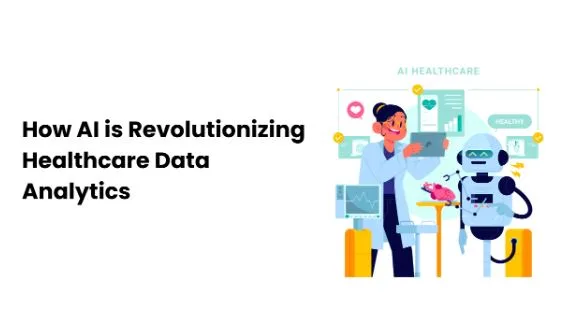From prompts to breaches: The unseen risks of ChatGPT usage
ChatGPT has become a reliable product in the workplace, school, and home. Its text, code, and insights features are changing how work gets done. That convenience, however, comes with its hidden dangers. Ignoring data exposure, model weaknesses, and misuse can lead to serious problems. Users need to know these risks. They need to implement strong security measures to use ChatGPT safely. The initial step to effective AI security is awareness.
This article helps readers discover the hidden risks of ChatGPT in the enterprise. It breaks down how data leaks, misuse, and system flaws can cause real problems. Most importantly, it shares simple ways to stay safe while still maximizing the benefits of AI.
ChatGPT Security Risks in Context
The fast adoption of ChatGPT in business processes has established new security concerns. The stakes increase as businesses become more dependent on AI-powered applications. The secrecy of information needs more than conventional cybersecurity measures.
Security in Enterprise AI Adoption
Organizations tend to implement AI at a fast pace to match competition. By doing so, they might fail to adopt strong risk evaluation. The company’s sensitive information may get into the system without the appropriate measures. This leaves the organization vulnerable to breaches. Therefore, enterprise AI security shouldn’t be an afterthought but should be a priority.
Data Privacy Concerns with ChatGPT
ChatGPT conversations may be saved or recorded. Whenever users provide personal or corporate information, they are at risk of having it exposed. Such practices raise issues of data privacy. Therefore, it is important that organizations monitor the information they share.
Data and Privacy Risks in ChatGPT Usage
The method of data processing and storage in ChatGPT introduces some weaknesses. When such a risk is not handled adequately, it may undermine compliance and trust.
Accidental Data Leaks
Users can share confidential information without intent in prompts. When it is filed, such information can be left in the system. When training is violated or abused, it may harm individuals and organizations. This danger increases as employees use ChatGPT to do work that is sensitive.
API Vulnerabilities
Many companies integrate ChatGPT through APIs to extend its functionality. If these connections aren’t secured, they can let attackers in. Poorly configured APIs increase the chances of unauthorized access to stored conversations. They can also expose other linked systems.
Regulations for Privacy and Compliance
GDPR and HIPAA, among other standard regulations, require organizations to protect personal data. Using ChatGPT without any defined protection may breach compliance. Companies may face penalties whenever their staff exchanges controlled data on AI systems. They can also get sued.
Security Exploits and Malicious Use Cases
Attackers can also exploit the capabilities of ChatGPT. Using prompts or outputs, attackers can bypass the security systems and cause damage.
Prompt Injection Attacks
Attackers can insert hidden instructions within prompts. These instructions may lead the AI to reveal information it should not disclose. They may also cause it to take unauthorized actions. Prompt injection is a significant risk when the model is linked to other systems.
Malicious Code Generation
ChatGPT has been a game-changer for developers. However, the cybercriminals are exploiting it too. They are using it to create malware and ransomware. These threats can slip past weak security systems. They end up harming everyday users. It is a double-edged sword; the same tool that helps programmers also empowers hackers.
Phishing and Social Engineering
The model’s natural language capabilities make it ideal for creating convincing messages. Phishing emails written with ChatGPT can appear authentic and professional. This makes it more likely that recipients will click links or share credentials. As a result, the success rate of attacks increases.
Shadow AI in the Workplace
In some cases, employees use ChatGPT without informing IT departments. This “shadow AI” poses risks. The shared data cannot be monitored or controlled by security teams. Your prompts might include sensitive data, creating hidden vulnerabilities that hackers can exploit.
Model Integrity and Reliability Issues
Besides external risks, the model itself is flawed. Training data can be manipulated or corrupted by someone. This will undermine accuracy and trust.
Data Poisoning
Attackers may feed flawed or malicious data into AI systems. If this data impacts future training, the model may create biased or harmful outputs. For enterprises, poisoned data could undermine decision-making and customer trust.
Model Inversion Attacks
Sophisticated attacks can extract sensitive training data from the model. This could reveal proprietary information, intellectual property, or private details from earlier datasets. The risk is a big concern for organizations that use AI for customer or internal data.
AI Hallucinations
ChatGPT creates false information sometimes with confidence. Those hallucinations are deceptive to users. They are particularly dangerous in sensitive industries. Examples are healthcare, finance, and legal compliance. When implemented, wrong outputs can lead to costly mistakes and liability issues.
Implications of Ignoring ChatGPT Risks
Ignoring the security threats from ChatGPT can be disastrous. Those consequences affect financial stability, trust, and regulatory reputation.
Financial and Data Losses
Data breaches are often costly. According to IBM, the global average breach cost is $4.44 million. Sharing sensitive data with ChatGPT can result in financial losses for businesses. This is especially true when attackers gain access to multiple systems.
Reputational Impact
Trust is central to organizational success. Leaks of private information through AI can cause lasting damage. If customers or partners become aware, the impact may deepen. Rebuilding confidence can take years. This makes reputational loss one of the most harmful outcomes.
Legal and Governance Challenges
Mishandling of sensitive information is subject to legal investigation. Enterprises can face lawsuits, fines, or limitations on their operations. The compliance audits are difficult under weak AI governance. This increases risks during regulatory reviews.
Enhancing AI Security and Governance
The answer to the ChatGPT problem is a blend of policies, technology, and awareness. Businesses must take reasonable measures to protect their AI usage.
Building Enterprise AI Security Frameworks
Firms need to incorporate AI usage in their current security measures. This consists of explicit data policies, API connection surveillance, and regular risk evaluation. A professionally designed framework will make AI conform to organizational security goals.
Employee Training and Awareness
Breach is usually through human error. Employees can be trained in the safe use of AI to ensure accidental leaks are minimized. Your employees must understand what information is confidential. They should also recognize prompt manipulation and know when to report suspicious outputs.
Compliance and Governance Measures
Organizations need to make sure their AI follows specific industry regulations. Good oversight helps them track how employees use ChatGPT. When something goes wrong, clear accountability structures ensure people take responsibility. Strong governance keeps everything transparent and encourages responsible innovation.
Conclusion
ChatGPT brings opportunity but also risk, data leaks, and exploitation. To use AI safely, enterprises and individuals must balance innovation with accountability. They must create strong security frameworks. They must train employees and enforce compliance. That way, they can protect sensitive data and customer trust.





